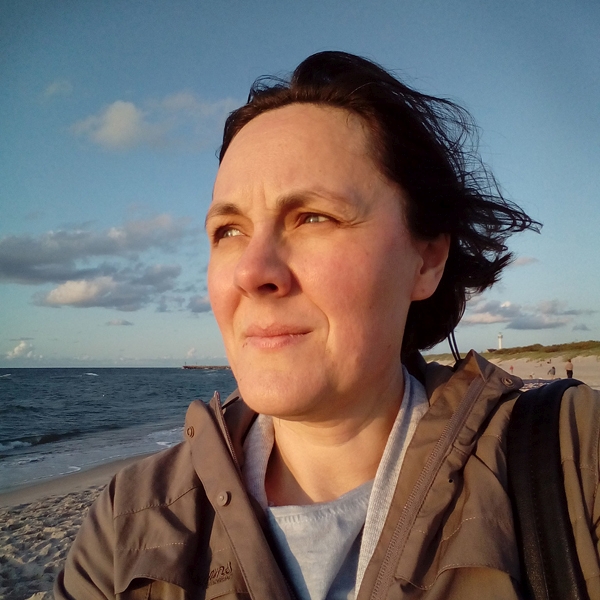
2 September
PLUS SIZE APPRECIATION DAY

„Save the date” is a series of articles that have been written to celebrate various unusual holidays. The authors of the presented materials are students, doctoral students and employees of the Faculty of Science and Technology of the University of Silesia.
When we think of large sizes, the first thing that comes to mind for many of us is shopping for clothes. After all, we measure our waist circumference, height, and sleeve length. These sizes can be larger or smaller. The greater the measurements, the larger the size you are looking for. At least in theory. The size of the clothes you buy does not necessarily correspond to your actual size and weight. Some of us love tight jeans, others love sweaters which are a few sizes too big.
fot. private archive
ANNA BRZESKA, PhD
Institute of Mathematics
When we think of large sizes, the first thing that comes to mind for many of us is shopping for clothes. After all, we measure our waist circumference, height, and sleeve length. These sizes can be larger or smaller. The greater the measurements, the larger the size you are looking for. At least in theory. The size of the clothes you buy does not necessarily correspond to your actual size and weight. Some of us love tight jeans, others love sweaters which are a few sizes too big.
But, how does clothing relate to mathematics? As it turns out, mathematics has its own kind of fashion. When we want to have a tailor-made trousers, the first thing a tailor does is to take our measure. In mathematics the notion of measure is a function that assigns a number to a family of sets called sigma-algebra. This specific family, to put it simply, consists of all sets that can be measured by a given measure.
Considering that a mathematical measure is a generalisation of the view of classical measures such as length, area, or volume, one could say that the measure of a set of points of a line segment is its length, and the measure of a set of points of a square is its area. However, there are less obvious measures in mathematics.
One of the more popular measures in mathematics is the so-called probability measure. A probability measure is a probability, which we encountered already in secondary school, when we determine the chances of rolling a six with a dice. A probability measure is characterised by the limitation of its value to one. The measure “1” is taken by certain events, and the measure “0” by impossible events.
Another quite common measure in mathematics is the so-called counting measure. It assigns to sets the number of their elements, i.e. a specific natural number in the case of finite sets, and the so-called infinity, represented by a symbol resembling a sideways eight, in the case of infinite sets. For example, the size of the 10-element set of colours would be 10, but the size of the set of all subsets of this set (i.e. all colours that can be obtained by mixing or not any number of initial colours), which is also a finite set, would be 1024. This is because there are exactly as many subsets of a given finite set as there are zero-one sequences of the same length. 1024 is the number of 10-element zero-one sequences. So we see that from a relatively small set of elements a set of quite considerable size has been created – now there are 1023 colours to choose from (one of the subsets of the 10-element set is the empty set). So we could jokingly say that a finite set in this measure can quickly put on weight.
It may come as a surprise to some that in mathematics not every set can be measured by every measure. The Banach-Tarski theorem gives us an argument for this, since it states, in short, that a segment from 0 to 1 can be made into a segment from 0 to 2 by shifting its disjoint parts, which form a certain division. In view of the requirements of mathematical measures (the measures of the disjointed parts should be equal to the measure of the whole after their combination) such a stretching of the length is impossible, so at least one of the elements of the initial division of the segment must be immeasurable.
This way we get a set that is not empty, but in fact contains infinitely many numbers, while at the same time does not contain any complete line, even a very short one. On the other hand, it is possible to “cover” this set with a countable (that is, numbered with natural numbers) number of very short open intervals. Sets with the latter property are called sets of Lebesgue measure zero. This “thinness” of a Cantor set is all the more spectacular because at the same time the counting measure of this set is infinite. Unfortunately, the only thing we can do to reduce our own size in a similar way is to look at ourselves in a specially constructed distorting mirror.






